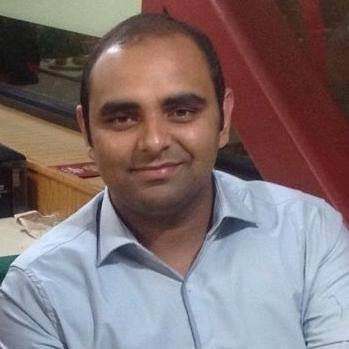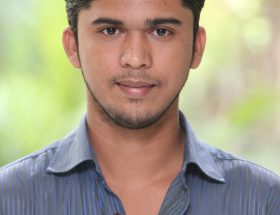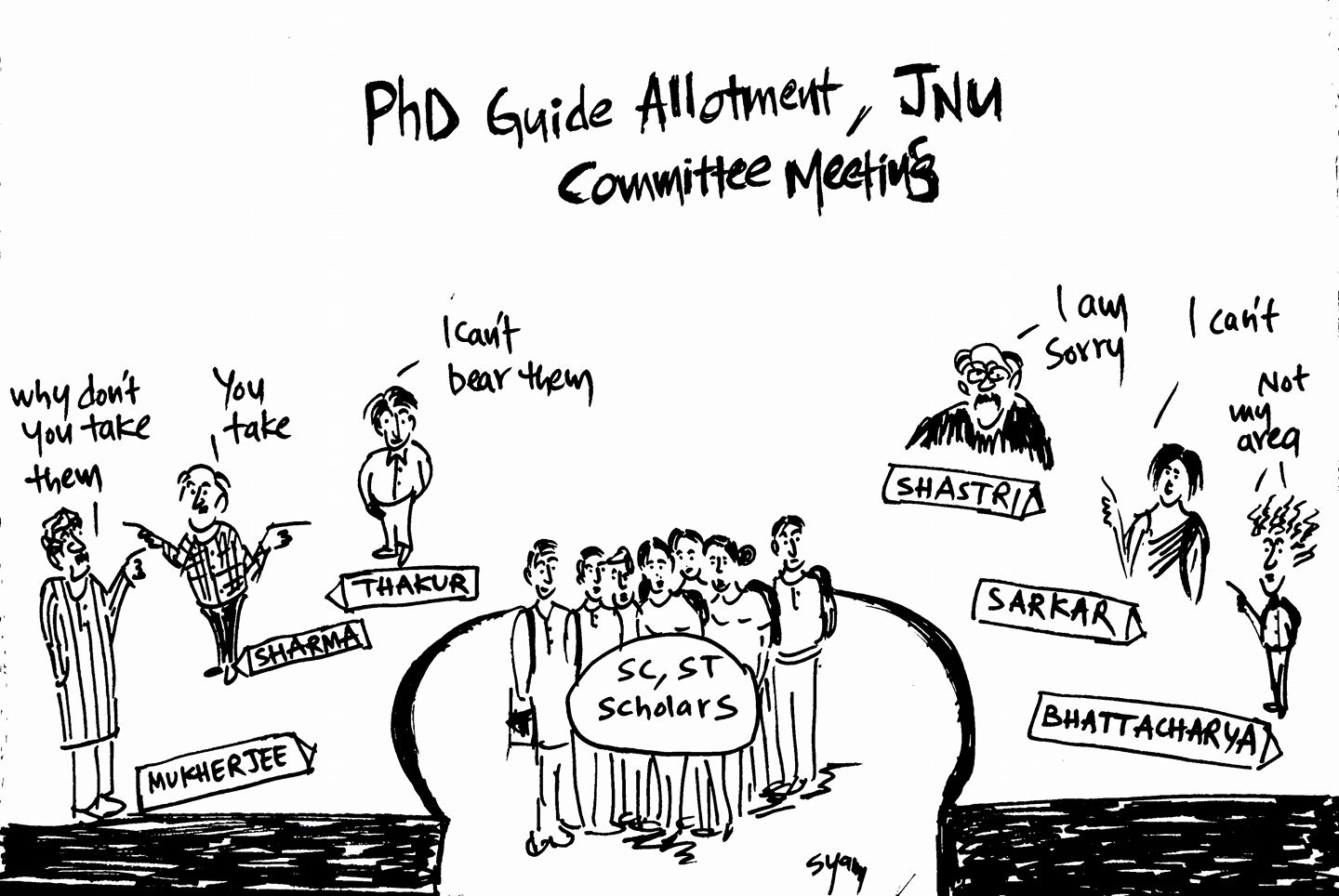Rajinder Barpagga
 It is an absolute pleasure to dedicate this article to the memory of honourable Dr. Bhim Rao Ambedkar (14 April 1891- 6 December 1956), revivalist of Buddhism in India, the first law minister of independent India and the chief architect of Indian constitution drafting committee. He had made the biggest contribution in the construction of the world’s largest constitution, of the world’s largest democracy ‘Bharat’, which is my nation India. He was awarded the highest title of ‘Bharat Ratna’, meaning ‘jewel of India’ by the Government of India.
It is an absolute pleasure to dedicate this article to the memory of honourable Dr. Bhim Rao Ambedkar (14 April 1891- 6 December 1956), revivalist of Buddhism in India, the first law minister of independent India and the chief architect of Indian constitution drafting committee. He had made the biggest contribution in the construction of the world’s largest constitution, of the world’s largest democracy ‘Bharat’, which is my nation India. He was awarded the highest title of ‘Bharat Ratna’, meaning ‘jewel of India’ by the Government of India.
His struggle for the rights and respect for the 60 million untouchables in India brought me to a stage where I am addressing you through this publication. I would have stayed as an unfortunate untouchable without his great efforts.
Today India has more than 160 million people who belong to the untouchable class.
As Australia is a nation with diversity in culture, religion, language and faith so the question of identity becomes most prominent after coming here.
Someone may identity herself/himself as per nationality, ethnicity or religion, which is a macro level identity. However within every society or community, that macro identity acquires a micro form.
I am an Indian by nationality and a Punjabi by ethnicity for everyone in Australia at the macro level but the acquisition of the identity of ‘Indian Punjabi’ came into play about 4 years ago when I moved to Australia. When I was in India for 19 years of my life, I did not need to say that I am an Indian Punjabi!

It would be more important to talk about those 19 years of my human development as a child and as a teenager in a village called Herian of the Indian Punjab. These 4 years as an ‘Indian Punjabi’ (in Australia) did not affect my development as much as compared to those 19 years.
My philosophy, aims, thoughts, interests, inspirations, decisions, actions and reactions are dependent upon the life style and society that I was exposed to for most of my life in India.
During my growing up years, from childhood to teenage, the only thing that I was told about my identity was that I belong to a lower caste called ‘Chamaar’ (Cobbler). I had grown up watching my grandfather making and repairing shoes for other people in our village. He had done this for most of his life and he still does the same. I found nothing wrong with that until I found some people abusing me and my fellow boys by calling us filthy Chamaars.
I was punched in my face by some rich, higher caste boys, who had come from England for a visit to India, during our village festival, just because I was a Chamaar and I only wanted to see the bull races by standing beside them.
I never understood why our caste was so disgusting for them?

My grandparents, who came from Pakistan during the partition of India in 1947, told me that they had experienced the worst part of caste related discrimination.They told me stories of their personal experiences of being servants of higher caste people for all of their lives and continuously tolerating their abuses in the name of our caste.
However when I saw it happening with my parents too, it just shocked me.
Life went through 12 years in school and I entered the degree course in Science but my questions, in relation to my experiences and observations, still remained uunanswered. By then I had read/heard uncountable stories of caste related discrimination in print and electronic media.
The study of science gave me a new way of observation, exploration, analysis and conclusion and I came to Australia with the above vision as an international student.
It multiplied my astonishment, when I found two young men arguing with each other and using my caste name as an abuse in my college in Melbourne. I again felt the same as I used to in India. I politely told them that I belong to the same caste and if I am so filthy then please stop asking my help in assignments.

I saw Australian born Indians sitting with drinks in their hands, telling and enjoying the stories of sexual exploitation of women of my caste. These people often use caste names to abuse each other during any argument in 21st century in a country like Australia!
In order to find the hidden and invisible, I started my search for reasons behind this unwanted identity, which was not the choice of my grandparents and parents and me. I found that our caste is one of the 1,800 untouchable castes in India.
The identity of untouchables has been changed many times and now they are called Dalits. In some publications they are referred as depressed classes, broken people or scheduled castes as per the constitution of India; and according to Mr. Gandhi: Harijans!
Historically, untouchables are aboriginals of India and belonged to the Indus Valley Civilisation which existed about 5000 years ago in the western part of the Indian subcontinent, primarily in the region of Punjab along the banks of the Indus river and it had accomplished the status of being one of the most developed civilisations due to its planned cities with world’s first known sanitation system, scientific development by having first known system of weights and measures, agriculture and architecture.

People known as Aryans (the Aryans were a tribe of Indo-European speaking, horse-riding nomads living in the arid steppes of Eurasia) entered in India through the North West; invaded the Indus valley civilisation and destroyed all its features which made it extraordinary, just like any other invaders.
They became rulers after a long war with the aboriginal Indians (inhabitants of Indus Valley Civilisation/Dravidians) and devised a system of division, to make their rule easy, called the Varna system. This Varna system divided people into four categories known as Brahmin, Kshatriya, Vaishya and Shudra.
Aryans kept themselves in the first category of Brahmin and other three classes below them. Now every Varna had its own duties and no one could break the limits of their caste or otherwise they would be punished by the Aryans/Brahmins.
It was only the Brahmin who could teach, rule, conduct religious practices and write history or holy books. Kshatriya had the duty to ensure security for the Brahmin and he was the one who has sole right to keep and use a weapon. The Vaishya was the one who could do business and pay the Brahmin a huge share of profits. Shudra was the one who was there to serve the other three upper classes by various means such as cleaning, leather work, agriculture, carpentry or steel work.
The Shudras were not given any human rights at all.

The founder of Buddhism, Siddharth Gautam Buddh, today known as ‘Buddha’, played a revolutionary role against the Varna system. He preached his philosophy for most of his life in India and due to his work of social revolution India became a Buddhist nation for about 500 years. The Mauryan Empire was a result of the Buddhist faith. Buddhist philosophy did huge damage to the discriminatory system of Varna by accepting people from all Varnas, particularly Shudras, in the Buddhist organisation called Sangha.
After the end of the Mauryan Empire, in order to suppress the struggle of Buddhists against the Varna system, the Aryans killed them on a massive scale and treated the rest in an inhuman way.
Aryans repeated their historical tendencies again, as per their ‘divide and rule’ principle, and divided the Shudras into thousands of castes so that they could never get together and rise against them. This was the time when caste system came into play, which was different to the Varna system as it contained thousands of further categories of Shudras namely, touchable and untouchable jatis. According to this new system all the Buddhists were stamped as untouchables.
Touchable shudras also had no human rights but still they were able to be touched as they compromised with Aryans to some extent.

Untouchables were treated worse than any other slaves in the rest of the world. They were values much less dogs or donkeys. They were not allowed to go to schools/temples, they were not allowed to hear and pronounce texts of Hinduism which were written in Sanskrit. Nobody was allowed to learn this language and it is important to mention that all the religious texts of Hinduism are written in this language. If an untouchable heard any holy word of Sanskrit, he would be turned deaf by pouring molten lead into his ears and if anybody spoke against the caste system his tongue would be chopped off. Their footprints on the road were considered unfortunate and to erase them a broom would be hung behind the neck of an untouchable which would clean the road while he walks. A donkey or a dog could drink from a pond but an untouchable could not even touch the water. If that happened the pond was subjected to purification by chanting of holy texts and adding cow urine in the pond!
Untouchables could not wear ornaments, they could use only shrouds as their clothes, eat leftovers of higher castes or would be forced to eat dead bodies, live in filthy areas. They could never earn wealth by any means, or participate in administration and were never allowed to cross the ocean.
Women had to go through additional torture, irrespective of their touchable or untouchable status. They could be raped any time by a person of higher caste whenever they were found alone, or forced to have sex with other men. If they could not give bear children, they would have to burn themselves alive with the dead body of their husbands to reach heaven, as a religious custom. If they revolted they would be tortured and forcefully burnt alive and this tradition was known as ‘Sati Pratha’. A newly born baby girl would be immersed to death in a tub of milk with an expectation of male child next time.

As you can feel that the cobra of caste system hinders the overall development of an untouchable as a human being with venom that kills their identity, human rights, self-respect and self-esteem. It snatches opportunities for intellectual development from the common man and pushes people into a living hell.
The venom which is thousands of years old still flows in Indian society and the upper class of people have never ever tried to expose it to the world. They have indulged in building and running cultural, religious and sporting organisations but never looked at the tragedy affecting a majority of the Indian people.
My grandfather still does leather work as a cobbler. According to the caste system he is an untouchable ‘Chamaar’ because he works with leather. However my father is a welder in a production unit of the Indian railways; he does not work with leather but still people recognize him as a Chamaar. I will not be surprised if I get the same regard even if I become the prime minister!
According to the Buddha everything is bound to change and nothing is permanent. I believe the above situation will change some day.
I will always confront this ideology which regards a man lower in society on the basis of lower caste, irrespective of his personal character. Character decides who you are; not a caste.

When the Islamic faith entered India, many people from the lower castes embraced Islam to escape the leprosy of caste as Islam contained no caste discrimination. Religious scriptures of Sikhism (Sri Guru Granth Sahib) also provides the history of that time and speaks against Varna/Caste system.
After a period of thousands of years we can still find the dust of caste in Indian society. Many people have sacrificed their lives to eradicate it.
Caste is a disease of the mind and its only cure is mind reform. Which is a hard and slow task but still I am doing my part as much as I can.
I know it seems theoretical but personally I have come to the conclusion, after 24 years of frustration, that real identity of a human being is individual character and to me, caste, religion, nationality or ethnicity are not actual factors of human identity.
I would like readers to rise above from any system which divides us and creates friction between our relationships. The caste system was one example which was my own experience but there are many other forms of racism and discrimination still alive. Let us vapourise them with the heat of our unity.
(A version of this article was first published in the bilingual publication The Page, Australia, in 2009 and was discussed on Asia Pacific – ABC Radio)
~
References
1. http://archaeology.about.com/od/indusrivercivilizations/a/aryans.htm 10/8/09
2. Professor Gurnam Singh Mukatsar. Bharti Lok Neech Kive Bane.
3. A.R. Darshi. Shudras’ Lost Glory: Indus-Harappa Civilisation.
4. Dr. Bhim Rao Ambedkar. Slavery Vs Untouchability.
5. Dr. Bhim Rao Ambedkar. Who were the untouchables and why they became untouchables.
~~~
Rajinder Barpagga is from Herian village of Nawanshahr district in Punjab. He studied B.Sc till the 2nd year, went to Australia in 2006, and did his Diploma in Community Welfare work. His grandfather was a cobbler who worked in surrounding villages to earn his livelihood while his dad works in rail coach factory in Kapurthala, Punjab.










